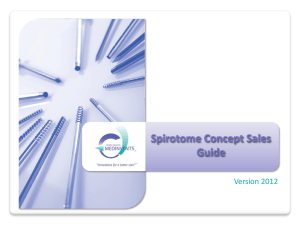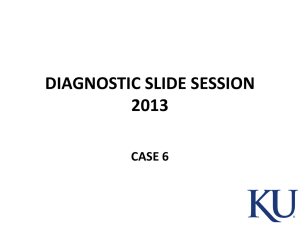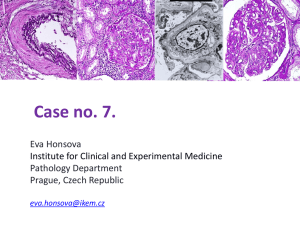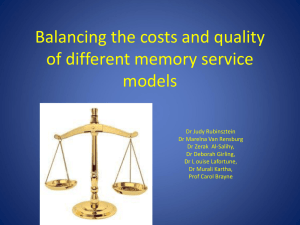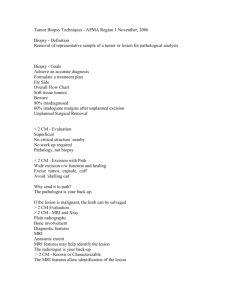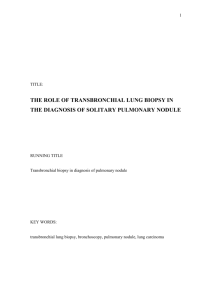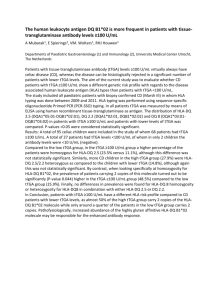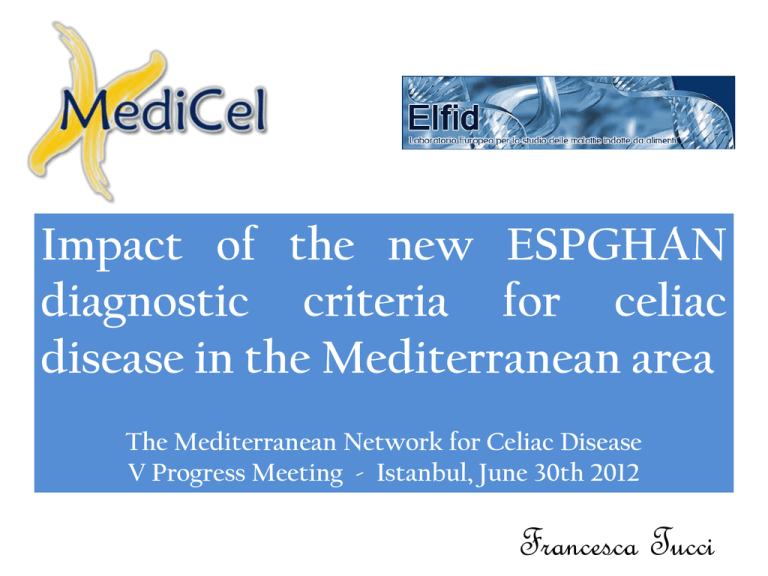
Impact of the new ESPGHAN
diagnostic criteria for celiac
disease in the Mediterranean area
The Mediterranean Network for Celiac Disease
V Progress Meeting - Istanbul, June 30th 2012
Francesca Tucci
CLINICAL CD GUIDELINES
JPGN 2012;54: 136–160
AIM OF THIS CROSS SECTIONAL SURVEY
• To obtain a picture of the diagnostic facilities available in the 16
CD reference centers of the Mediterranean Basin
• To determine where the new ESPGHAN criteria could be
applied and on what percentage of patients
• To estimates the likelihood of having a diagnosis of CD, both
with and without endoscopy/histology results, to determine
where the new criteria can be applied
We analyzed 831 CD cases from the 16 CD reference
centers of the Mediterranean Basin
Country
N of cases
Albania
43
Algeria
50
Bosnia Herzegovina
42
Croatia
50
Egypt
32
France
50
Greece
50
Italy (Campania)
50
Italy (Sicily)
50
Malta
32
Montenegro
50
Morocco
50
Slovenia
50
Spain
50
Tunisia
81
Turkey
50
Total
831
Clinical, histological and laboratory data were
collected through a standardized form
Missing Data
CENTER
SEROLOGY
BIOPSY
HLA
N.A.
N.A.
N.A.
Campania
0 (0%)
0 (0%)
89 (89%)
Sicily
1 (2%)
0 (0%)
34 (68%)
Turkey
2 (4%)
2 (4%)
16 (32%)
Greece
1 (2%)
0 (0%)
0 (0%)
Albania
0 (0%)
27 (62.8%)
43 (100%)
Croatia
3 (6%)
0 (0%)
48 (96%)
Slovenia
0 (0%)
0 (0%)
0 (0%)
Bosnia H
0 (0%)
8 (19%)
28 (66,7%)
Algeria
29 (58%)
0 (0%)
50 (100%)
Morocco
16 (32%)
0 (0%)
50 (100%)
France
4 (8%)
0 (0%)
46 (48%)
Tunisia
12 (14.8%)
2 (2.5%)
66 (81.5 %)
Egypt
0 (0%)
4 (12.5%)
32(100%)
Spain
0 (0%)
0 (0%)
0 (0%)
Montenegro
9 (18%)
2 (4%)
45 (90%)
Total
77 (9%)
45 (5.6%)
497 (66.4%)
A SIMPLE SCORING SYSTEM FOR THE DIAGNOSIS OF CD
The aims of the scoring system are as follows:
•To positively diagnose coeliac disease at the initial assessment
and be able to accept a diagnosis made in the past with biopsy
•To simplify the diagnosis of CD in patients with obvious findings
•To protect against overdiagnosis when only nonspecific findings
are present
•To compare by a standardized criteria the diagnostic capacities of
each centre we computed the SAGE score for each case, by
summing the clinical features to the serology and Histology data
and adding the HLA data, when available
SAGE score
744 CD
patients
83 SAGE < 4
661 SAGE
≥4
291 with
histology
370 without
histology
Discussion
• This cross-sectional study provides the first picture of the “pattern” of CD in
these countries and of the diagnostic capabilities available in the reference
centers evaluated
• Most cases were symptomatic and most showed the classical symptoms
• tTGA assay is available in most of the countries evaluated, but it needs
standardization in more than one-third of countries
• We applied the SAGE score to evaluate the diagnostic chances of an individual
having CD, almost all cases had a diagnostic score (> 4) when biopsy was
available, but the vast majority of them (85%) would have diagnostic score
without biopsy only if HLA testing were available
• Biopsy is generally available, but it is clear that many centers will require
support in order to standardize the histological procedures. Biopsy is an
obstacle to the dissemination
Referee(s)' Comments to Authors
JPGN
Reviewer #1
The objective set for the study was "to obtain an objective picture of the facilities available for CD diagnosis
in the reference centers of MEDICEL countries to determine where the new ESPGHAN diagnostic criteria
could be applied and on what percentage of patients". This suggests a study that will contrast a certain
number of tests to be done for diagnosis ("current" against "new" criteria), defined as "diagnostic criteria"
and the facilities available, all of which will lead to calculate how many centers are able to adequately
diagnose CD in the region assessed.
Authors are not explicit about what they are comparing when they say "current criteria" (ESPGHAN 1990)
and "new criteria". This latter refers to an important initiative of some researchers who have proposed a
protocol i.e., a protocol to be tested but that by no means represents accepted new criteria. Rather this
refers to exceptional cases in which a small intestinal biopsy can be not necessary. In statistical analysis
authors declare "comparison between groups"; comparison should be between one set of criteria against the
other and not between groups.
WJG
Reviewer#1
The authors seek to provides the first picture of the pattern of coeliac disease in the Mediterranean basin and to
identify the diagnostic capabilities available in this area. They appear to have succeeded in this aim and I cannot
make any suggestions or revisions to improve what is a very well written paper
Reviewer#2
The data presented here has serious limitations. The data is quite heterogenous and retrospective in nature. 3 main
parameters like tTGA assay biopsy and HLA have not been performed in all the patients. There is gross ununiformity
of tTGA and biopsy reporting. The aim of the study has not been properly addressed
Need a change: Data file
• To revise the data file in order to fill out our data
• To have, for each country center, COMPLETE cases for the following:
Clinical information
Age
Sex
Tgase
Biopsies
Need a change: Serology tests
• Type of test used:
What tTG Kit each center use?
Are the cut-off value standardized?
• Biological samples: Availability of storage sera
Need a change: Biopsy criteria
Criteria for assessment of biopsy:
• Is Marsh Oberhuber criteria a standardized form?
• Does each center use it?
Marsh Type
IEL / 100
enterocytes
– jejunum
IEL / 100
enterocytes duodenum
Crypt
hyperplasia
Villi
0
<40
<30
Normal
Normal
1
>40
>30
Normal
Normal
2
>40
>30
Increased
Normal
3a
>40
>30
Increased
Mild atrophy
3b
>40
>30
Increased
Marked
atrophy
3c
>40
>30
Increased
Complete
atrophy
HLA
For HLA we will consider the differences above the country
resources
Biological samples: Availability of DNA
Proposal: a DNA-bank to type all missing data (from saliva/blood)
How can we improve this work?
• We have worked for more than a year
• Deadline: end of July
• Next journal: Digestive and Liver Disease



